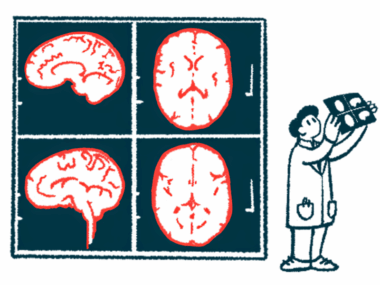Brain Atrophy, Serum NfL Levels May Predict Cognition Early in MS
Written by |

A blood test for serum neurofilament light chain (sNfL) levels, along with radiological findings, can help to detect early cognitive issues in people recently diagnosed with multiple sclerosis (MS), a study suggests.
The study “Cortical Thickness and Serum NfL Explain Cognitive Dysfunction in Newly Diagnosed Patients With Multiple Sclerosis,” published in the journal Neurology: Neuroimmunology and Neuroinflammation, focused on the use of sNfL levels — when combined with MRI findings — as a way to help predict neurodegeneration in newly diagnosed patients.
sNfL is important for the maintenance of the structural integrity of neuronal axons, the long projections of neurons that help to conduct electrical messages throughout the brain and body. Previous studies have shown that increased sNfL blood levels correlate with diminished cognitive abilities in MS patients, with sNfL levels considered “a biological marker of neuroaxonal damage,” the study noted.
However, a blood test alone does not yield enough information for a full picture of disease progression.
Researchers in Spain assessed the cognitive abilities of 35 people recently diagnosed with relapsing-remitting MS (RRMS; mean age of 38.4, and diagnosed within previous four years) as compared with 23 healthy participants as a control group (mean age, 35.43), using standardized clinical tests.
Blood samples were collected to look at sNfL levels, and brain MRIs were performed to evaluate cortical thickness.
MRI scans showed an increase in grey matter atrophy, corresponding to a decrease in cortical thickness (cortical thinning), among the 35 RRMS patients. This loss was especially seen in the thalamus region, a brain region primarily involved in relaying motor and sensory signals.
“These findings are consistent with previous evidence, which emphasizes thalamic atrophy as an early and sensitive surrogate of neurodegeneration processes in MS,” the researchers wrote.
sNfL levels were also higher in MS patients compared with the control group, although not significantly so, with a median of 38 picogram/milliliter vs. 36 pg/ml. Still, a trend toward significance was seen, and higher sNfL levels correlated with poorer clinical neurological tests, as well as with lower neuropsychological scores — RRMS patients had poorer performances on tests assessing information processing speed and working memory, and verbal memory.
While sNfL serum levels alone were unable to distinguish between newly diagnosed patients and healthy controls, they were able to predict neuropsychological impairment when combined with measures of cortical thickness and psychiatric test scores.
“Although sNfL levels alone do not clearly differentiate [healthy controls] and patients with RRMS, in combination with global and regional CT [cortical thickness], sNfL levels can better explain the presence of underlying cognitive deficits,” the researchers wrote.
Based on these results, the team suggested that sNfL levels could potentially be used “as a complementary biomarker of MS cognitive impairment at early stages of the disease and as a relevant measure in clinical settings.”





